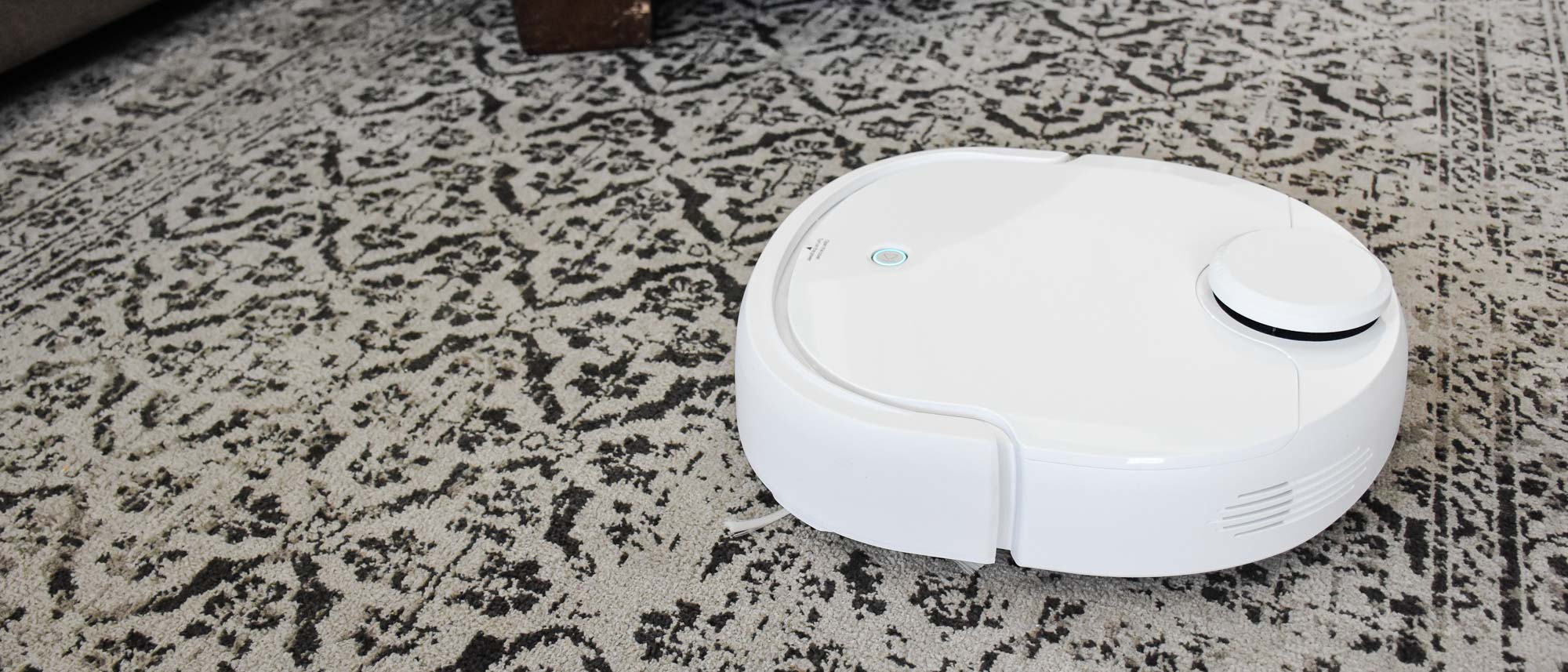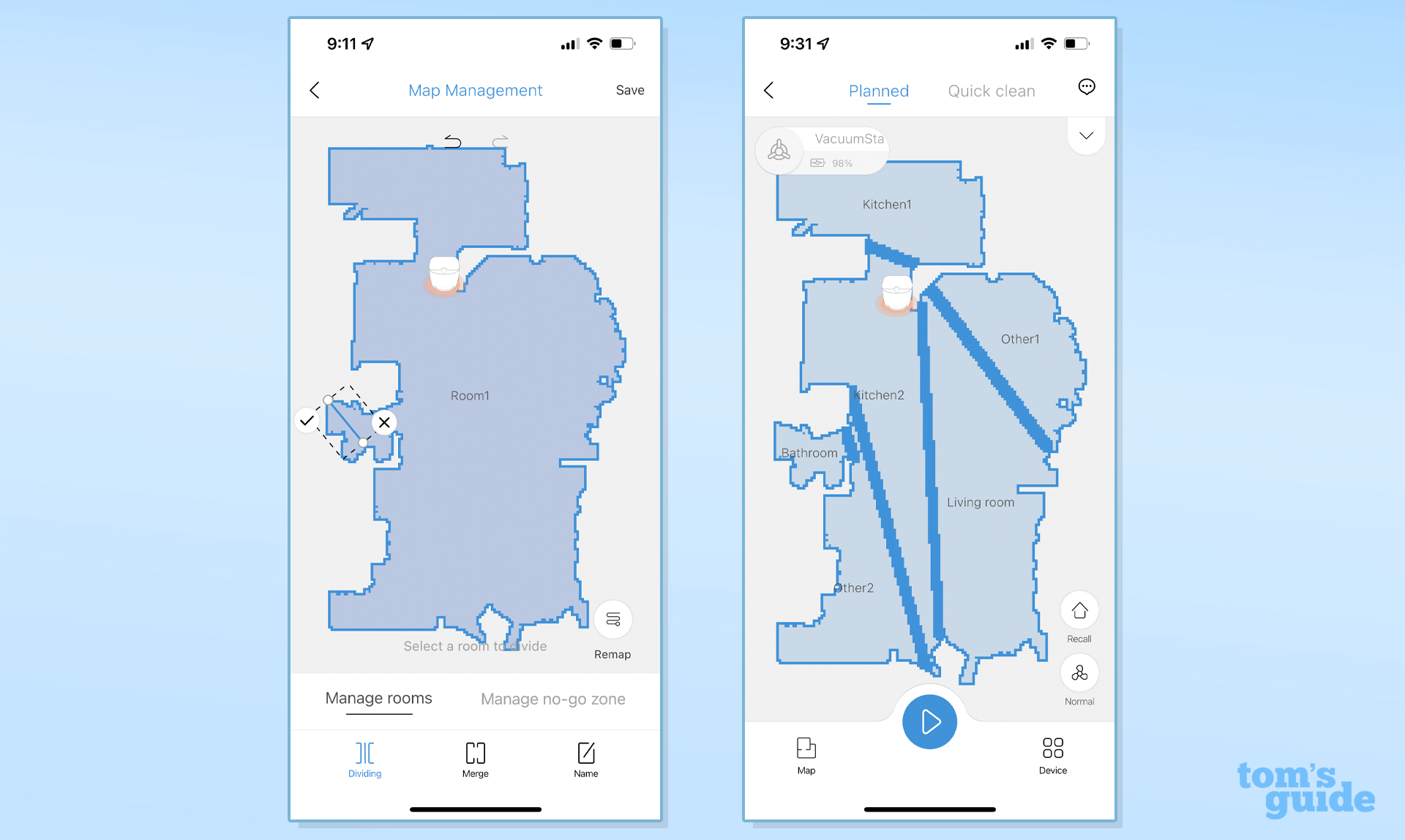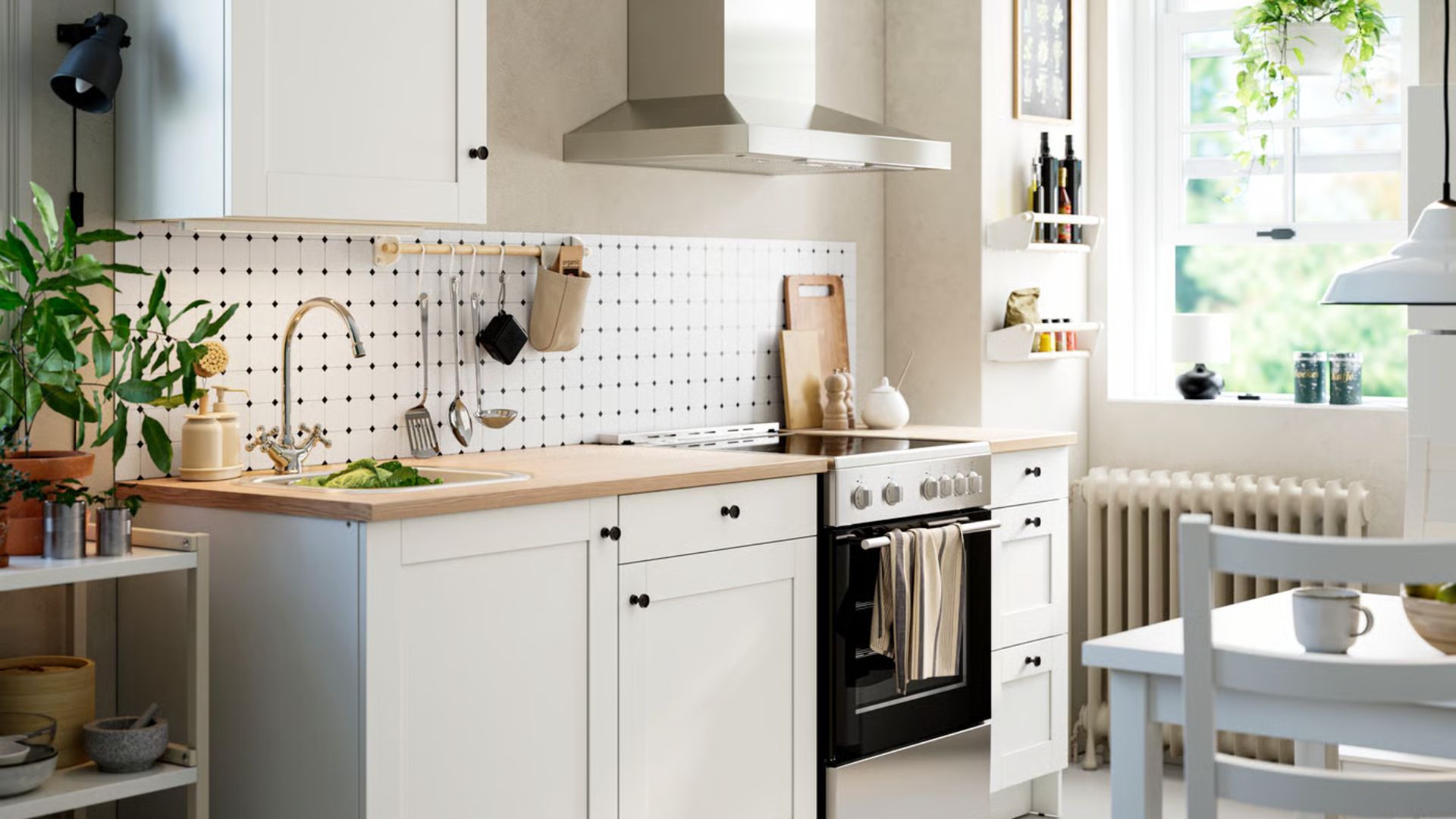Tom's Guide Verdict
A unique mopping experience isn’t enough to save the Narwal T10 from its half-baked app and hefty price tag.
Pros
- +
Good mopping performance
- +
Unique mop design
- +
Fast mapping
Cons
- -
Mediocre vacuum performance
- -
Expensive
- -
Confusing app
Why you can trust Tom's Guide
Overall cleaning performance: 63.42
Pet hair score: 54
Size: 13.58 inches x 12.36 inches x 4.21 inches
Modes: Vacuuming, Mopping
On board dustbin capacity: 0.2 liters
Smart home compatibility: Alexa & Google Assistant
The Narwal T10 hybrid robot mop and vacuum is the first 2-in-1 to prioritize washing floors over vacuuming. This mighty machine is packed with a lot of tech to keep its mop heads and your floors clean. But, can it find a place on the best robot vacuums list or even the best robot mops list? Read our Narwal T10 review to find out where this pricey unicorn of a device belongs.
Narwal T10 review: Price and availability
The Narwal T10 is available on Amazon and directly from Narwal for $1,049, which includes the self-cleaning base station. The base station is only used for cleaning the mop heads — it does not include a self-emptying dustbin like other robot vacuums. That’s still a manual job with this bot. The Narwal comes with two sets of mopping pads and additional pads are available for $14 a pair. Floor cleaner detergent sheets, which can be added to the clean water tank, are available in packs of 20 for $19.
Narwal T10 review: Design
Without a doubt, the Narwal T10 is the most interesting 2-in-1 mop and vacuum that I’ve seen. Sure, it’s shaped like a traditional robot vacuum, complete with a LIDAR turret on top and a dustbin concealed under a thin plastic hood, but, trust me, the Narwal is very different. Flip the Narwal over and the differences are instantly apparent. In vacuuming mode, there are two spoked brushes on either side of a single intake vent, attached to the robot via very strong magnets. Remove that piece and you’re left with two posts which can hold the rotating mop pads. The fuzzy triangular mop pads rotate continuously for a deeper clean as the Narwal T10 travels around your home. The Roborock S7 MaxV Ultra uses a vibrating plate to keep its microfiber pad in motion, but that thin pad doesn’t inspire as much confidence as the T10’s plush mop pads.

Those extra absorbent mop pads are part of what makes the Narwal T10’s base so interesting. It’s a big base dressed in shiny white plastic that’s more attractive than the Roborock S7 MaxV Ultra’s behemoth of base. On the top of the base, there’s a small round LED screen that displays the Narwal’s current status. Two touch-sensitive buttons on either side of the screen control docking, map creation, starting, and stopping.
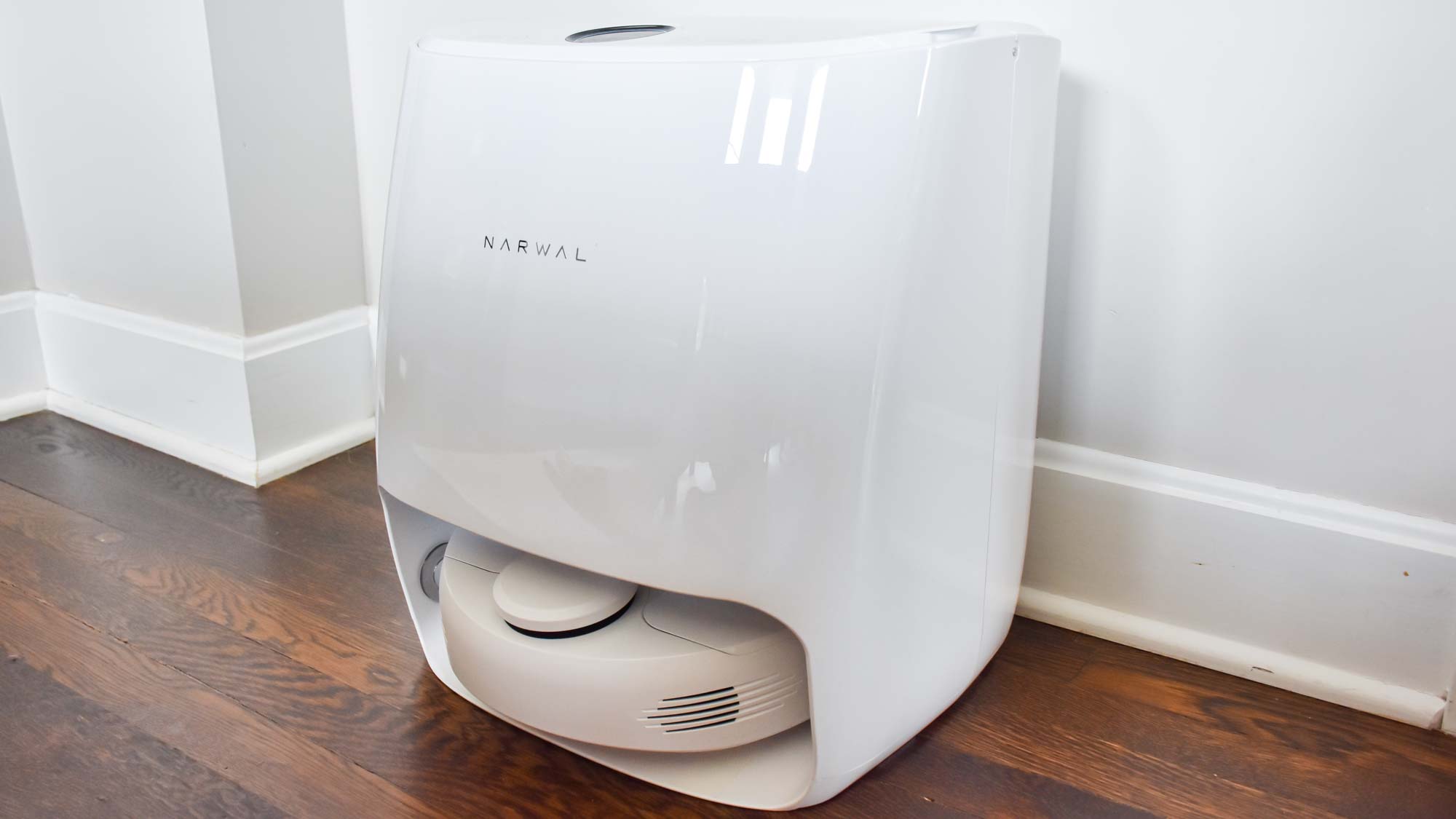
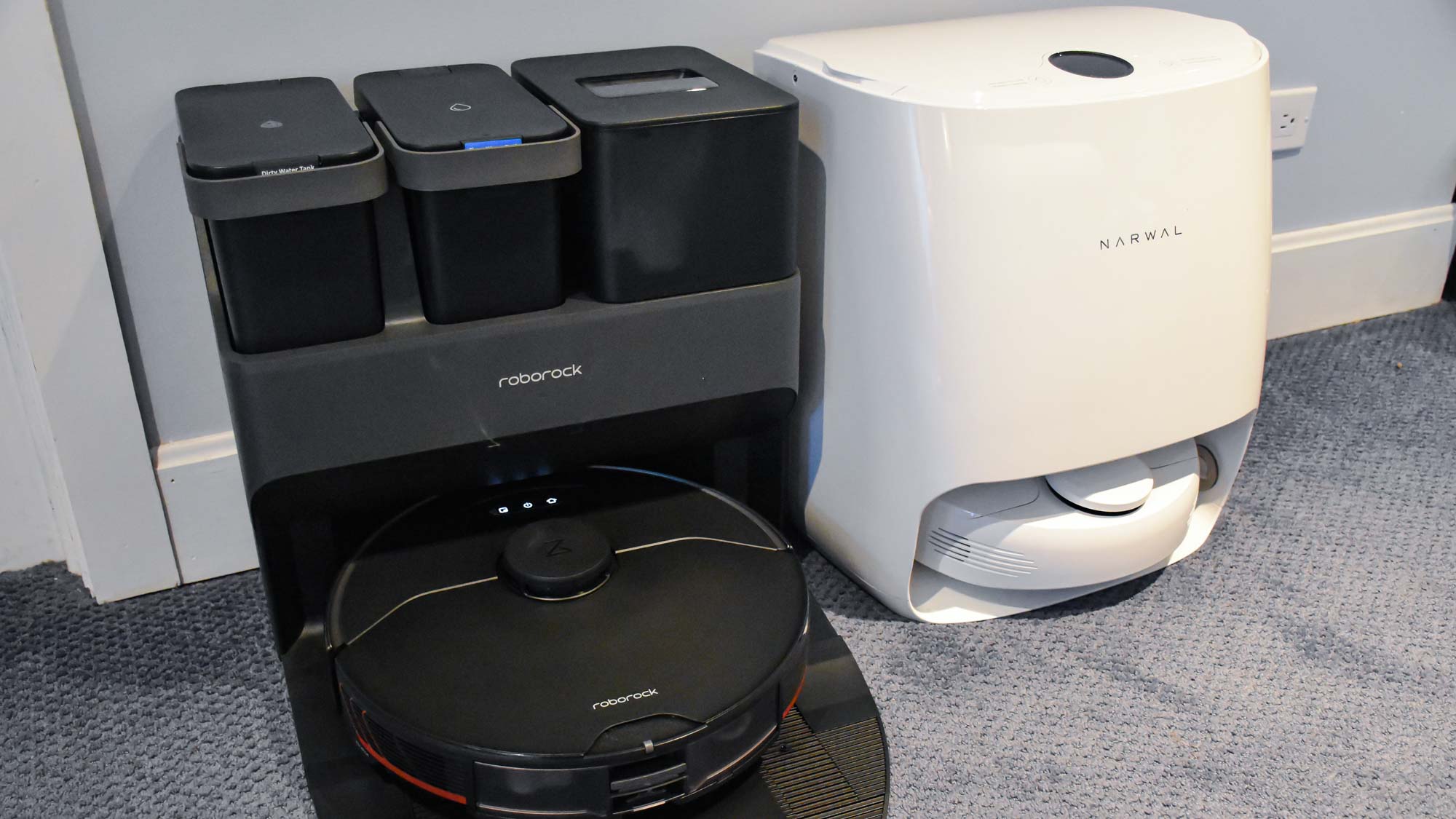
Inside the base is where the magic happens. The upper portion houses two large water reservoirs: one for clean water and one for dirty. The Narwal itself doesn’t have an onboard water tank, so it’s up to the base to ensure the mop pads are wet and ready to clean.

Before and after each cleaning run, the water jets inside of the base moisten and clean the pads. At the same time, raised textured plastic helps scrub the pads as they spin inside of the base. It’s a cool system that works well, but I noticed larger pieces of debris that weren’t completely sucked up while vacuuming tended to get caught up in the textured plastic.
Narwal T10 review: Mopping performance
Scrub-a-dub-dubbing your floors until they shine is the Narwal T10’s primary mission and key feature. It mops in the same pattern that it vacuums – cleaning along the edges first before working on the center of a room. It’s not a fast mopper as it goes back to its base every few minutes to clean its mop heads, a process that takes roughly two minutes to complete at a time.
Get instant access to breaking news, the hottest reviews, great deals and helpful tips.
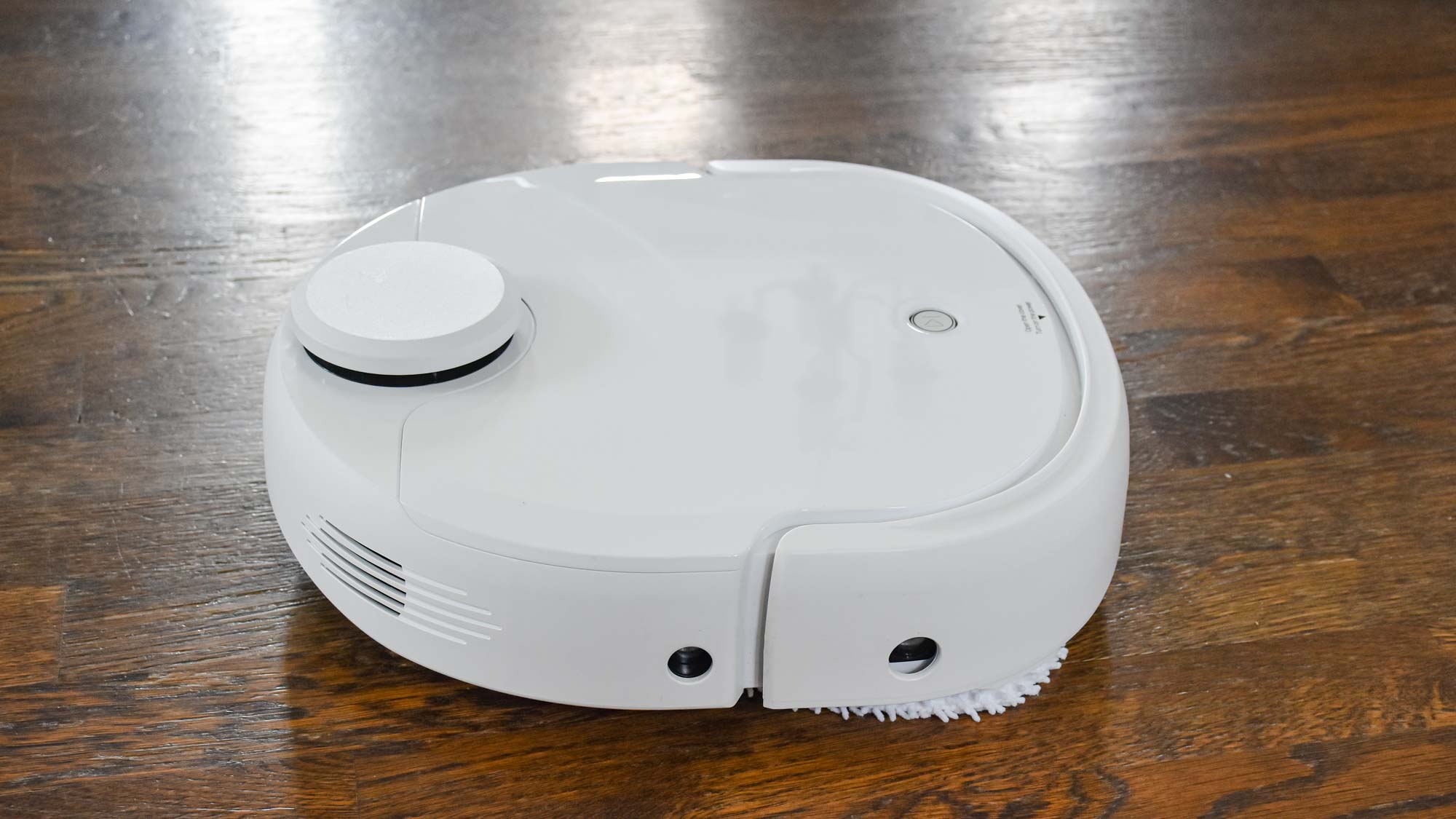
In terms of performance, I noticed my kitchen floor was cleaner after the Narwal worked on it, though there was still a slight filmy spot from where soy sauce had spilled earlier. It took longer than other hybrid robots, however the T10 did leave my floors streak-free. The dirty water stored in the base tank confirmed that it picked up a lot of gunk. The floor felt cleaner than it did after using the mop on the hybrid Roborock S7 MaxV Ultra, though the mopping-only iRobot Braava jet m6 was a better, more predictable floor cleaner. I appreciated that the T10’s frequent mop-head cleanings prevented it from just pushing dirt around the floor.

The tricky part with the Narwal T10 is getting it to clean where you want it to. The room-specific cleaning options within the app are rudimentary at best and there’s no option for specific zone or area cleaning. To keep the mop from accidentally washing a rug, I created multiple no-mop zones to block the Narwal from going beyond my kitchen and bathroom. However, I missed a small area when creating the no-mop zones within the app. This mapping miss caused the T10 to mop exactly one straight, Narwal-width line in my dining room. Instead of traveling in its usual S-shaped pattern to exit, it adhered to the no-mop zone by awkwardly backing itself out of the dining room. It spent a lot of time cleaning that one area — to the point that I almost thought something was wrong.
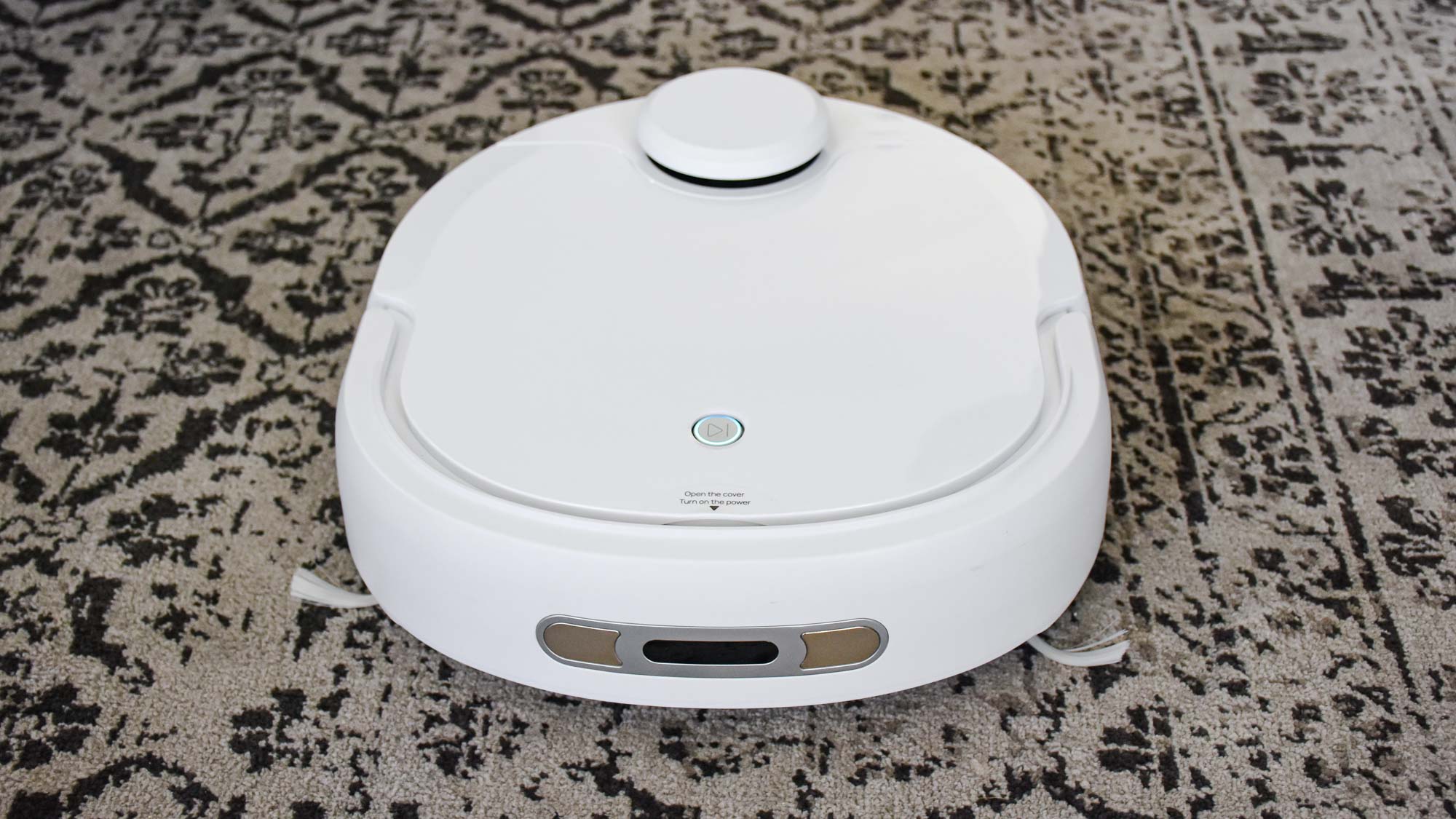
Unlike the mop-only iRobot Braava jet m6, the detergent pads available for the Narwal T10 are meant to be added to the clean water reservoir, not attached to the robot. The detergent pads are small and slowly dissolve within the 5 liter reservoir.
Narwal T10 review: Vacuuming performance
Narwhals, the unicorns of the sea, are not land-dwelling creatures. Appropriately enough, the namesake Narwal T10 works really well as a mop, but did not perform well at vacuuming, earning an overall average score of 63.42 in our lab tests. It scored well below its closest competitor, the iLife A11, which earned an overall average score of 72.15. During our testing, Cheerios clogged up the intake vent, to the point of causing an error.
Narwal T10: Combined cleaning performance scores
| Row 0 - Cell 0 | Overall Score | Cereal | Kitty litter | Dog hair |
| Narwal T10 | 63.42 | 62.2 | 74.05 | 54 |
| Roborock S7 MaxV Ultra | 91.26 | 99.8 | 95.73 | 78.25 |
| iLife A11 | 72.16 | 99 | 59.23 | 58.25 |
| Roborock S6 MaxV | 90.56 | 98.9 | 92.28 | 80.5 |
| Eufy RoboVac X8 Hybrid | 92.39 | 94.35 | 88.08 | 94.75 |
A few older bump-and-run robots like the iLife V3s Pro offer an intake vent and no brush roll. When testing those, we found some did better with pet hair because there was less for the hair to get tangled on. Following this trend, the Narwal T10 did well with dog hair on hardwood, picking up 99.5% of it. The Narwal also did a pretty good job of collecting kitty litter from our hardwood test area, earning a score of 93. That’s slightly better than the Eufy RoboVac X8 Hybrid, which has a dedicated brush roll.
Narwal T10: Hardwood Floor results
| Row 0 - Cell 0 | Cereal | Kitty litter | Dog hair |
| Narwal T10 | 57.25 | 93 | 99.5 |
| Roborock S7 MaxV Ultra | 99.6 | 94.8 | 98.5 |
| iLife A11 | 100 | 93.65 | 91 |
| Roborock S6 MaxV | 97.8 | 96.3 | 78 |
| Eufy RoboVac X8 Hybrid | 98.7 | 90 | 100 |
On carpet, the Narwal T10 probably should’ve just stayed docked. It picked up just 67.15% of the cereal in the test area and a dismal 8.5% of the dog hair. The only sort of silver lining was kitty litter, where the Narwal cleaned up 55.1% — more than double the amount picked up by the iLife A11. Considering the Narwal’s mapping challenges, it’s probably better to let it skip the rugs in the house.
Narwal T10: Carpet tests
| Row 0 - Cell 0 | Cereal | Kitty litter | Dog hair |
| Narwal T10 | 67.15 | 55.1 | 8.5 |
| Roborock S7 MaxV Ultra | 100 | 96.65 | 58 |
| iLife A11 | 98 | 24.8 | 25.5 |
| Roborock S6 MaxV | 100 | 88.25 | 83 |
| Eufy RoboVac X8 Hybrid | 90 | 86.15 | 89.5 |
Narwal T10 review: Setup, app and mapping
The Narwal T10 is controlled via the Narwal app (Android and iOS) which, quite frankly, needs some work. It’s confusing due to poor directions coupled with a few lost in translation error messages. Even connecting the robot to the app is more complicated than it needs to be. After installing the app and following the onscreen directions to put the robot in pairing mode (you press and hold two buttons on top of the robot to achieve this), I had to flip the robot upside down and scan a barcode in order to finish creating the connection. Why not stick that code under the hood of the Narwal next to the power button? Instead, the process was awkward and needlessly complicated.
While the Narwal T10 creates maps quickly, it can only save one map at a time. When I thought I was creating a new map, I was actually just confusing the robot. It tried to follow the original map it had created, got lost and sent me an error message instead of creating a new map. To fix this, I had to go into Map Management and select Remap before letting it loose on my first floor.
Though the Narwal T10 is capable of room-specific cleaning, creating accurate room divisions was a challenge. The app allows you to divide rooms one at a time, but it was hard to get the app to accept the divisions I was creating. For instance, it took a few minutes and a lot of fiddling around just to mark off the entrance to my bathroom. The app also failed to recognize the wall and furniture in the center of my semi-open floor plan, which prevented me from drawing additional room divisions. Each division line drawn in the app has to connect to an outside wall and the lines can’t intersect. Consequently, my room divisions ended up looking like a poorly constructed zig-zag line.
I had slightly better luck with no-go zones, which can be created for mopping, vacuuming, or both — but separate no-go zones have to be created for each mode. It’s a time consuming process. By creating several large no-go zones, I essentially ended up boxing the Narwal in so that it would only clean my kitchen floor and not venture into any area rugs. Unlike the Roborock S7 MaxV Ultra, there’s no built-in way for the Narwal to avoid soaking carpets.
Narwal T10 review: Verdict
I really wanted to be wowed by the Narwal T10. It’s a truly innovative machine that tries to creatively solve the issue of robotic mopping without constantly tending to an onboard water tank. Unfortunately, its clunky app holds it back. Though there are ways to work around it, this still isn’t a device I would trust to clean my home unsupervised. For $1,049, not only should the app be better and instill a greater sense of carpet-avoiding confidence, but the vacuum performance should be stronger, too.
If you’re looking for trust-worthy robotic mopping, the iRobot Braava jet m6 is a solid choice for half the price of the Narwal. Want mopping and vacuuming and money is no object? Check out the Roborock S7 MaxV Ultra. On the other hand, if you have a home full of bare floors and don’t need to worry about area rugs or room-specific cleaning, the Narwal T10 is a good, albeit expensive, choice.
Meghan McDonough is a journalist who currently tests and writes about robot vacuums. Since 2008, she’s written about laptops, mobile phones, headphones, speakers, and other consumer tech. When she sees an unfamiliar device, Meghan has a habit of asking complete strangers, “What is that? Does it work well for you?”
In her spare time, Meghan enjoys seeing live music, tending to her garden, and playing endless games of fetch with her Goldendoodle, Duke of Squirrel.
